
News
Is A DJI Mavic Air 2 Without AirSense Worth Buying?
The AirSense alert system uses ADS-B signals to detect planes and helicopters. But does it really matter if some Mavic Air 2 drones don't have it? Find out here. ... Read More
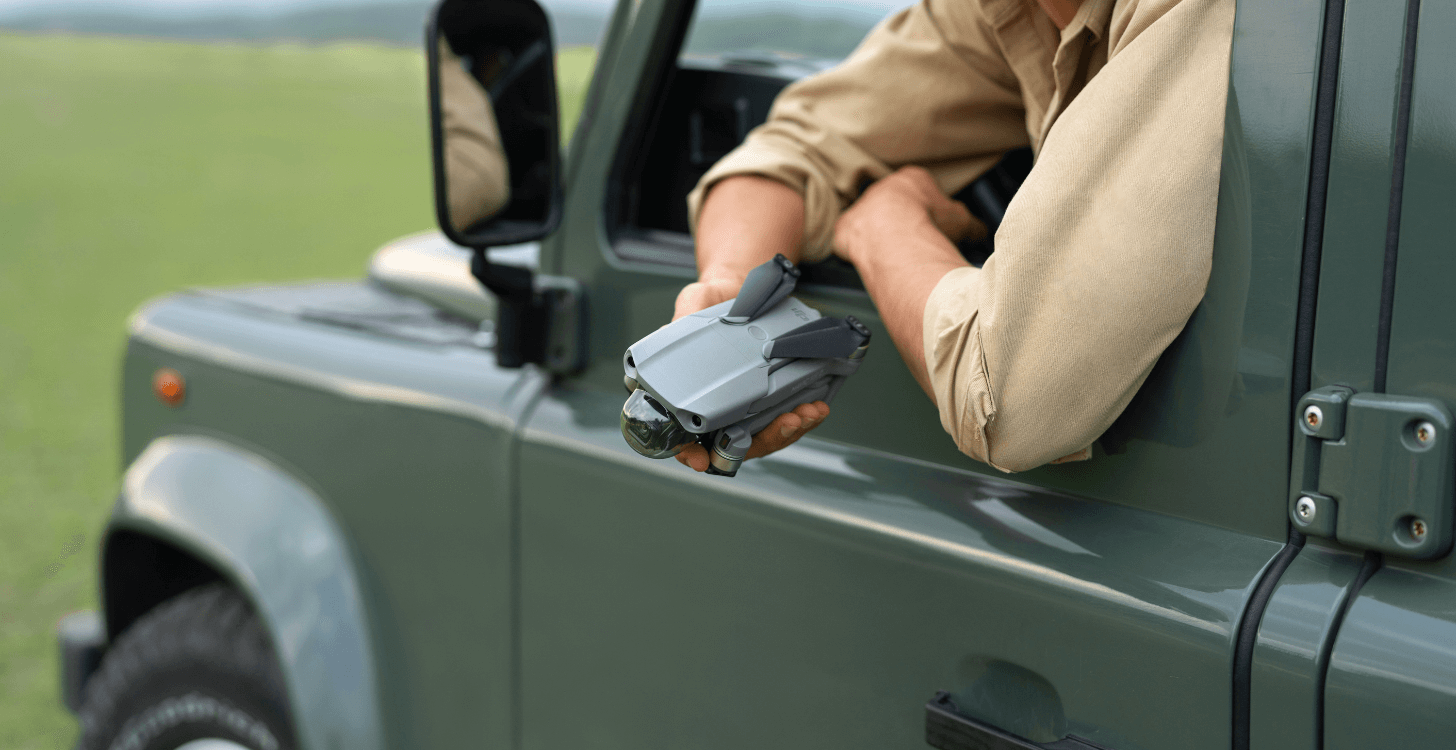
DJI Mavic Air 2 models outside North America do not have AirSense - but how crucial is this?
Flying legally, in accordance with the UK Drone Code, should keep you safe from collisions with manned aviation, without the need for AirSense;
The DJI Mavic Air 2 is packed with safety features, including APAS 3.0 - which provides reliable obstacle avoidance in complex scenarios;
DJI has said that future Mavic Air 2 models will include AirSense, but no confirmed date has been given.
April 27, 2020. DJI launched the Mavic Air 2 amid much fanfare, lauding new features such as 8K hyperlapse, the ability to capture 48MP pictures as well as 4K/60fps video, and fly for 34 minutes.

It's impressive stuff, and this newbie is a very welcome addition to the popular Mavic family.

Yet, there is a fly in the ointment. As the curtain came up on the Mavic Air 2, DJI announced that, initially, only models in North America would be equipped with AirSense.
The drone manufacturer cited supply chain shortages related to the coronavirus pandemic, but added that it is working towards making ADS-B equipped Mavic Air 2 drones available globally - although a timeline has not been forthcoming.
On the surface, this looks a big omission, and it has certainly ruffled feathers within the UAV community.
Yet, is it that big a deal, and should you still buy a DJI Mavic Air 2 without AirSense? Heliguy Insider takes a look.
What Is DJI AirSense?
Firstly, let's take a look at what DJI AirSense is.
DJI AirSense is an alert system that uses ADS-B signals from nearby airplanes and helicopters to warn drone pilots if they appear to be on a collision course.
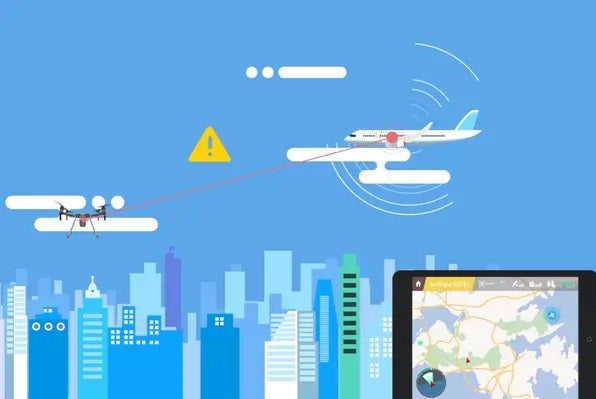
AirSense increases situational awareness for drone pilots, informing them about airplanes or helicopters in the area.
AirSense - part of DJI's commitment to enhance drone safety and improve airspace harmony between manned and unmanned aviation - can detect airplanes and helicopters from miles away, farther than a drone pilot can hear or see them, and displays their locations on the screen of the pilot’s remote controller.
Understandably, then, AirSense is useful to have, but is it a deal-breaker if your Mavic Air 2 is missing this feature?
We'd argue, no, and here's why.
Follow The Drone Code
By its very nature and design, the DJI Mavic Air 2 is aimed primarily at recreational flyers, hobbyists, and content creators wanting to capture that stunning landscape or amazing bit of footage.
By and large, your typical Mavic Air 2 operator will not be flying under special permissions granted by a PfCO, so will be bound by strict regulations which are there to ensure safe flights and avoid collisions with manned aviation.
In the UK, for instance, operators without those special permissions afforded by the PfCO must adhere to the Drone Code, which stipulates that you must not fly above 400ft.
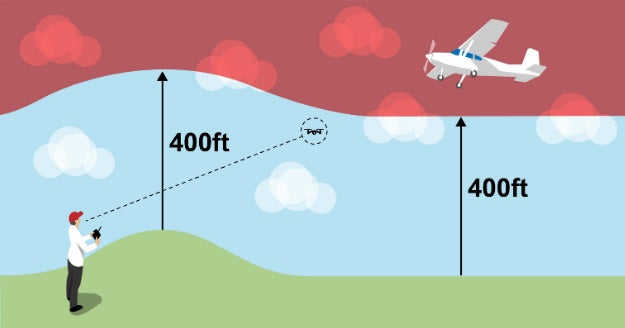
Stick to the Drone Code - do not fly above 400ft.
And 400ft is a key distance. Generally speaking, manned aircraft is required to stick to a minimum height of 500ft above ground level. Yes, there are exceptions, but this general rule of thumb helps to create a buffer between drones and traditional aviation.
Of course, planes do operate within 500ft of the ground when they take off and land, but again, UAV pilots following the Drone Code will know that there are strict restrictions about flying close to airports.
New rules state that drones cannot be flown within a 5km by 1km zone at the end of airport runways or within 2 or 2.5 nautical miles of an airport. Both of these zones extend upwards to a height of 2,000 feet above the airfield.

It is crucial that you do not send your drone into an airport's Flight Restriction Zone without permission.
It is illegal to fly any drone at any time within these restricted zones unless you have permission from air traffic control at the airport or, if air traffic control is not operational, from the airport itself.
It is also essential for operators following the Drone Code to fly their aircraft within visual line of sight, which again mitigates the risk of a collision.
As an aside, if you buy a Mavic Air 2 in the UK, you will need to register it under the Drone and Model Aircraft Registration and Education Service; another device to encourage safe and legal drone flying, and drone pilot accountability.
In a nutshell, as long as you stick to the drone laws and you aren't a commercial pilot with special permissions, you really shouldn't need AirSense when operating your Mavic Air 2.
AirSense Won't Stop Drone On Drone Collisions
So if you are flying in accordance with the UK Drone Code and aren't in danger of hitting a plane or helicopter, what about collisions with other drones?
Well, the limitations of AirSense mean that this system won't help you in this situation.
AirSense uses ADS-B In, rather than ADS-B Out technology. This means that DJI drones equipped with this feature can receive information broadcast from aviation with ADS-B Out transmitters - such as manned aviation - but they do not broadcast their own signal.
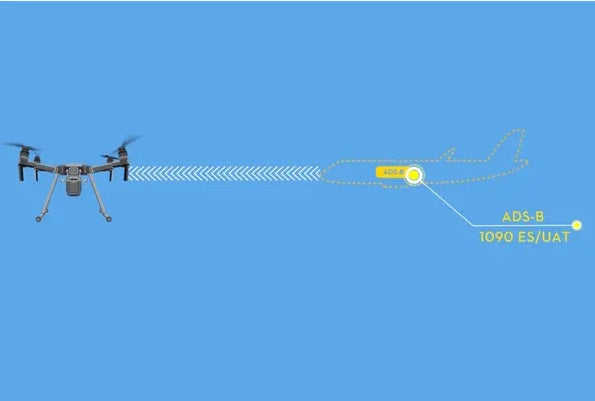
DJI drones with AirSense can pick up signals from surrounding aviation.
This is nothing to be scoffed at, and AirSense is great, but in principle, it means that two DJI drones equipped with AirSense would not be able to pick each other up, because neither are sending signals out.
Plus, not all DJI drones have AirSense anyway.
Therefore, this system isn't really designed to help Mavic Air 2 flyers avoid each other at lower altitudes. It is perhaps best to rely on the drone's other safety features instead (more of that in a minute).
As for AirSense, it is far better suited to the likes of the Mavic 2 Enterprise or DJI M200/M300 RTK platforms - which have AirSense built-in - and are operated by pilots who have special permissions to push operational boundaries.

The DJI M300 RTK has a range of sophisticated safety features, including ASirSense.
Mavic Air 2 - Safety Features
The disappointment voiced by some in the community over the AirSense issue is understandable.
But let's not forget that the Mavic Air 2 does still pack some important safety features, even without ADS-B technology.

The DJI Mavic Air 2 has a range of safety features, including the improved APAS 3.0.
First off, this drone comes with Advanced Pilot Assistance Systems (APAS) 3.0 - a smart feature which generates a real-time map of its surroundings and provides reliable obstacle avoidance in complex scenarios.
APAS 3.0 has been dramatically improved compared to previous generations and DJI states in its promotional material that this system currently offers the best obstacle avoidance available on a DJI aircraft.
The drone also benefits from three-way directional sensing (forward, backward, and downward) to enhance flight safety, while it also has an auxiliary light to improve visibility, assist with positioning, and help with a safe landing.

DJI Mavic Air 2.
For many drone pilots who are flying for fun, and are flying legally, this comprehensive combination of safety features should be enough to get you through a flight without incident.
DJI AirSense - Why America?
Some might be wondering why Mavic Air 2 models in North America have received the AirSense treatment, yet others across the rest of the world have been left without.
It's a valid question, especially as DJI last year committed to installing ADS-B Receivers in all consumer-grade drone models above 250g from January 2020.
As stated previously, DJI referenced the coronavirus pandemic for non-US Mavic Air 2's lacking this safety feature.
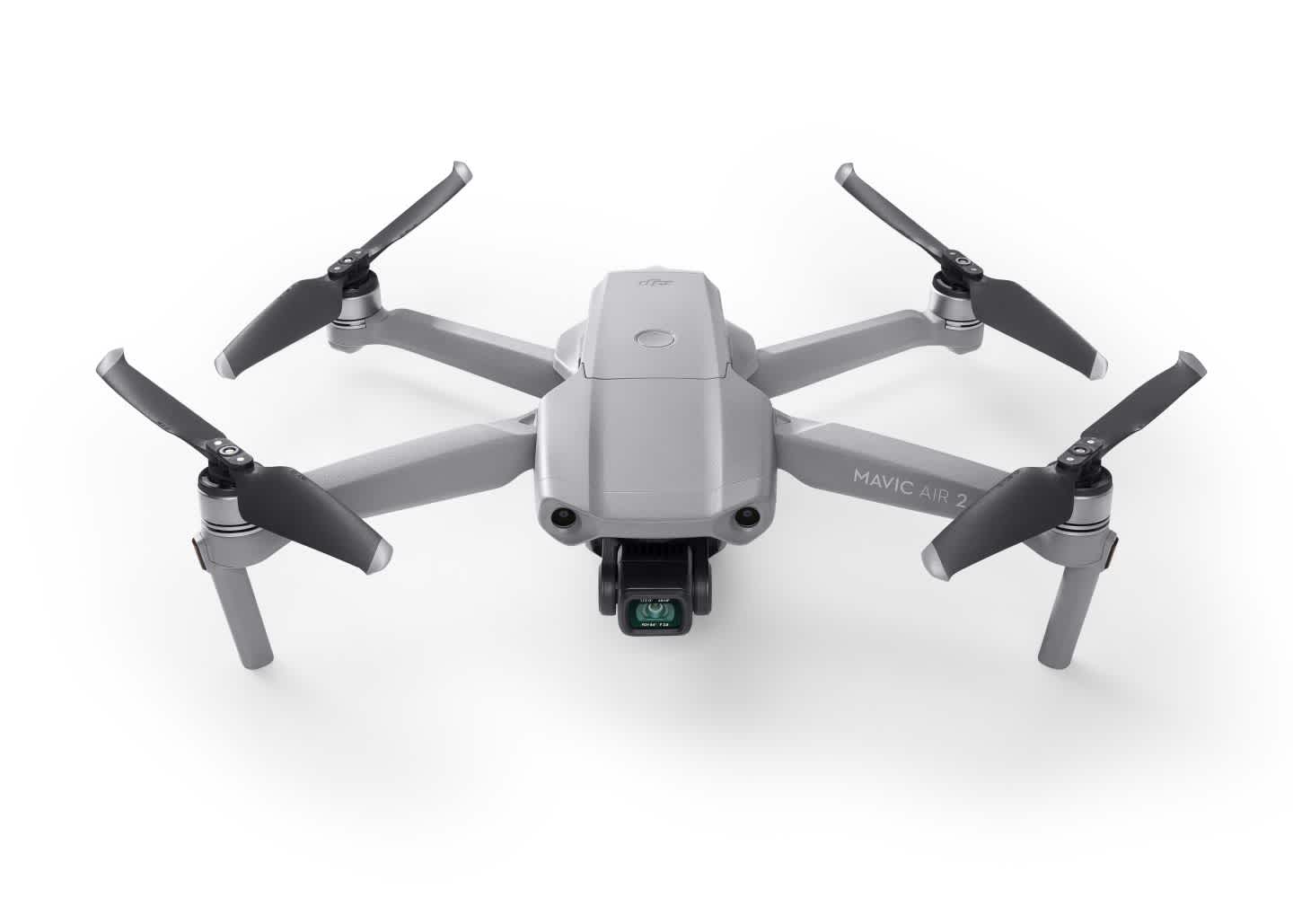
DJI Mavic Air 2.
But C-19 aside, there may be a perfectly valid reason why the US contingent of new Mavics were at the front of the queue.
The decision to prioritise US models can perhaps be found in a new requirement from the Federal Aviation Administration (FAA) for essentially all aircraft to be fitted with ADS-B transmitters in controlled airspace from the start of the year.
Alongside this new ruling, there is also an argument to suggest that fitting AirSense in drones is more pressing in countries like the US where manned aircraft is utilised at very low altitudes, for the likes of agriculture, for example.

Picture taken from farmflavour.com
After all, when DJI announced its AirSense commitment last year, Andrew Moore, Executive Director of the Virginia-based National Agricultural Aviation Association, hailed the development.
He said: "The aerial application industry has over 3,500 agricultural pilots that help farmers grow over 28% of our nation’s commercial cropland. They are flying 10 feet off the ground at speeds of over 100 miles per hour.
"Studies show that small drones are nearly impossible for our pilots to see, let alone track. An ideal drone system for manned ag pilots is one that has an ADS-B tracking system that can sense and avoid agricultural and other manned aircraft. DJI has taken the first step towards this by now equipping all of their drones with ADS-B tracking so their drone operators will be aware of other aircraft equipped with ADS-B tracking technology. "
European Rules: Is The Mavic Air 2 Class Rated?
Ahead of its release, there was an expectation that the DJI Mavic Air 2 would be the first drone in the world to comply with the new class-rating system, as part of European laws set to commence in the UK in November 2020.

However, this did not happen, and the drone was unveiled without a class category stamp. Que disgruntlement.
When quizzed, DJI issued this statement to Heliguy:
The technical standards are still being worked on by authorities, and Mavic Air 2, similar to all our drones, can be used in the open category with certain restrictions until the end of June 2022. In an ideal world it would have been great if the standards were ready and we could label the product in accordance with the regulation. However, as this is not the case, we would actually be in breach of the rules by labelling it without knowing if it will/can comply with final requirements. Hopefully we can find a way of retroactively showing compliance and allowing people to obtain necessary full operational approval once standards are finalised.
So, like AirSense, a class rating is missing. But again, does this matter?
In the short term, no. Until November, in the UK, you can fly your Mavic Air 2 like you'd fly your Mavic Mini, or your Mavic 2 Pro, for instance, in accordance with the Drone Code.
But from November, the new regulations are scheduled to start. As a slight caveat, the rules were delayed from an original July 2020 start date because of the coronavirus pandemic, so who knows, they could be delayed again?
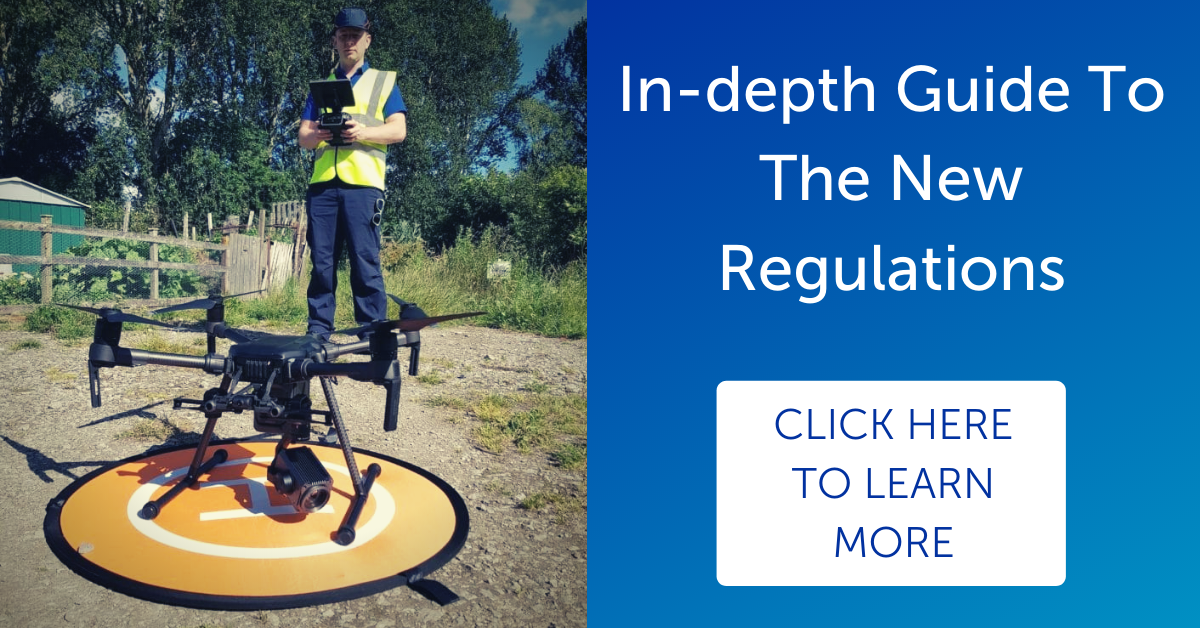
Once the regulations do start, it is true to say that operators of a Mavic Air 2, in the UK, could find themselves limited to where they can fly.
Without any specialist drone training from Recognised Assessment Entities (RAE), such as Heliguy, Mavic Air 2 pilots will need to fly in accordance with the A3 subcategory of the Open Category. This means that you won't be able to fly your drone in areas where uninvolved people are present, and you can't fly within 150m horizontally of residential, commercial, industrial or recreational areas.
However, there is a way to more freedom - and that is by obtaining an A2 CofC, with an RAE. Completing this one-day course, culminating in an exam, will allow you to fly up to 50m from uninvolved people, according to the rules in the A2 Transitional subcategory. You can sit this through Heliguy Blackbox - Heliguy's online training portal.
There are still a few issues. Because the Mavic Air 2 does not have the all-important class stamp, you will have to fly in the A3 subcategory, from the start of July 2022 - even if you have an A2 CofC.
That is a bit of a sting in the tail. However, here's some food for thought.
Once the new regulations begin, having an A2 CofC at your disposal is no bad thing, setting you up nicely to operate a range of different drones in the future.
Secondly, under the conditions of the A2 Transitional subcategory, you can fly your Mavic Air 2 in excess of 400ft above a fixed obstacle, provided you have prior permission and you do not go over 15m above the structure and stay 50m away from it. This is useful to know for operators wanting to conduct inspections or carry out real-estate photography, such as estate agents, for example.
Lastly, 2022 is two years away. As we all know, technology moves fast. After all, the original Mavic Air was unveiled at the start of 2018 - yet little over two years later, the Mavic Air 2 is released and blows its predecessor out of the water with vastly superior specs, and drone fans are keen to get a slice of the action.

From this: The original Mavic Air...

1000...to this: The Mavic Air 2.
In essence, if you can only operate the Mavic Air 2 for two years before you're back to the confines of the A3 subcategory, will it truly matter - because there is sure to be a new kid on the block which has become the must-have aircraft, confining the Mavic Air 2 to the shelf.
Should I Buy A DJI Mavic Air 2 Without AirSense - Summary
So, here's the thing. The disappointment that non-US Mavic Air 2s are not fitted with AirSense is understandable.
And, currently, there is no information about when future batches of this aircraft will be equipped with this technology.

The DJI Mavic Air 2.
However, if you are a drone operator in the UK, this doesn't have to deter you from purchasing a Mavic Air 2, especially as all models are the same, barring the AirSense omission.
RELATED POSTS:
As a hobbyist, following the Drone Code, and utilising the wealth of other safety features on this drone, should be enough to keep you away from harm.
Yes, AirSense would have been nice because it is a worthy addition, but it is not necessarily the be-all and end-all.
And the specs of the Mavic Air 2 certainly pack enough of a punch to seriously consider buying it.
To buy a Mavic Air 2 from Heliguy, click here.
